

2021 Crawford Fund Conference Keynote Listeners Report
December 22, 2021
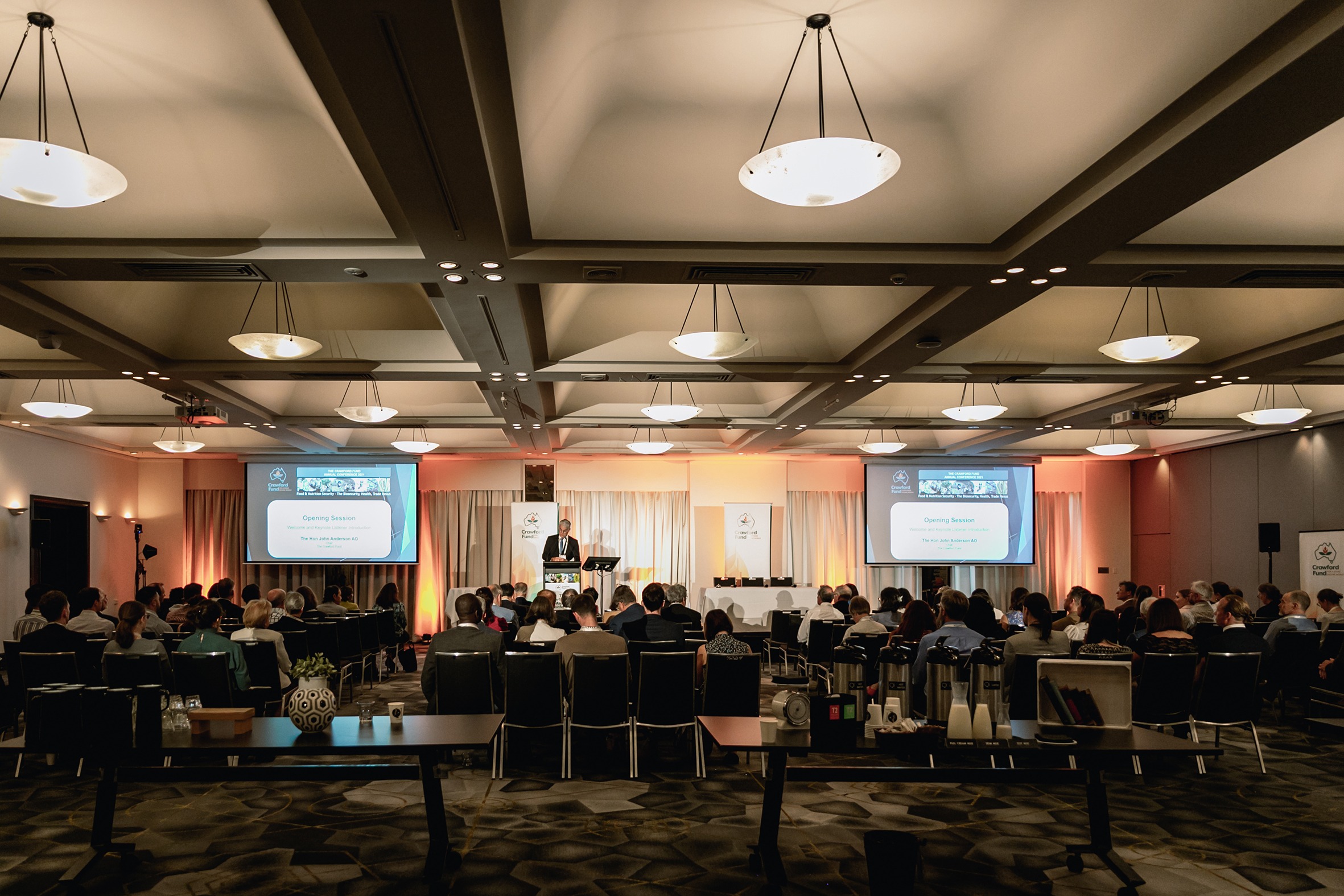
If you missed the Crawford Fund’s Annual Conference in mid-December, you can now access all the highlights via our Keynote Listeners report, a convenient and succinct summary capturing the important messages from our highly anticipated and in 2021, COVID-delayed, flagship event.
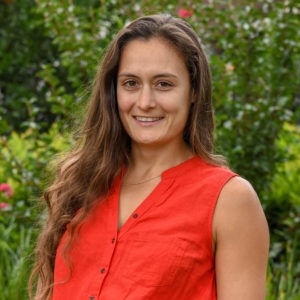
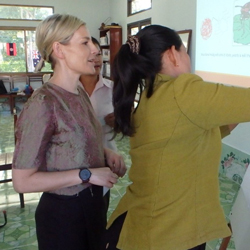
Our Keynote Listeners, play an integral role in summarising and communicating key messages from our conference. This initiative is delivered, as part of our RAID program (Researchers in Agriculture for International Development) – the Australia-wide network that brings together early to mid-career researchers with an interest in agriculture and international development.
Our RAID keynote listeners this year, Dr Madaline Healey and Ms Rebecca Cotton, are former conference scholars who have maintained their interest in agricultural research for development and are both active international researchers.
All of the presentations from our respected international and national experts are already available, as well as the presentation of the Crawford Fund Medals for 2020 and 2021, and Dr Agnes Kalibata’s Sir John Crawford Memorial Address which opened the event. These resources are linked throughout the following report.
Crawford Fund Conference 2021
“Food & Nutrition Security – The Biosecurity, Health, Trade Nexus”
Introduction
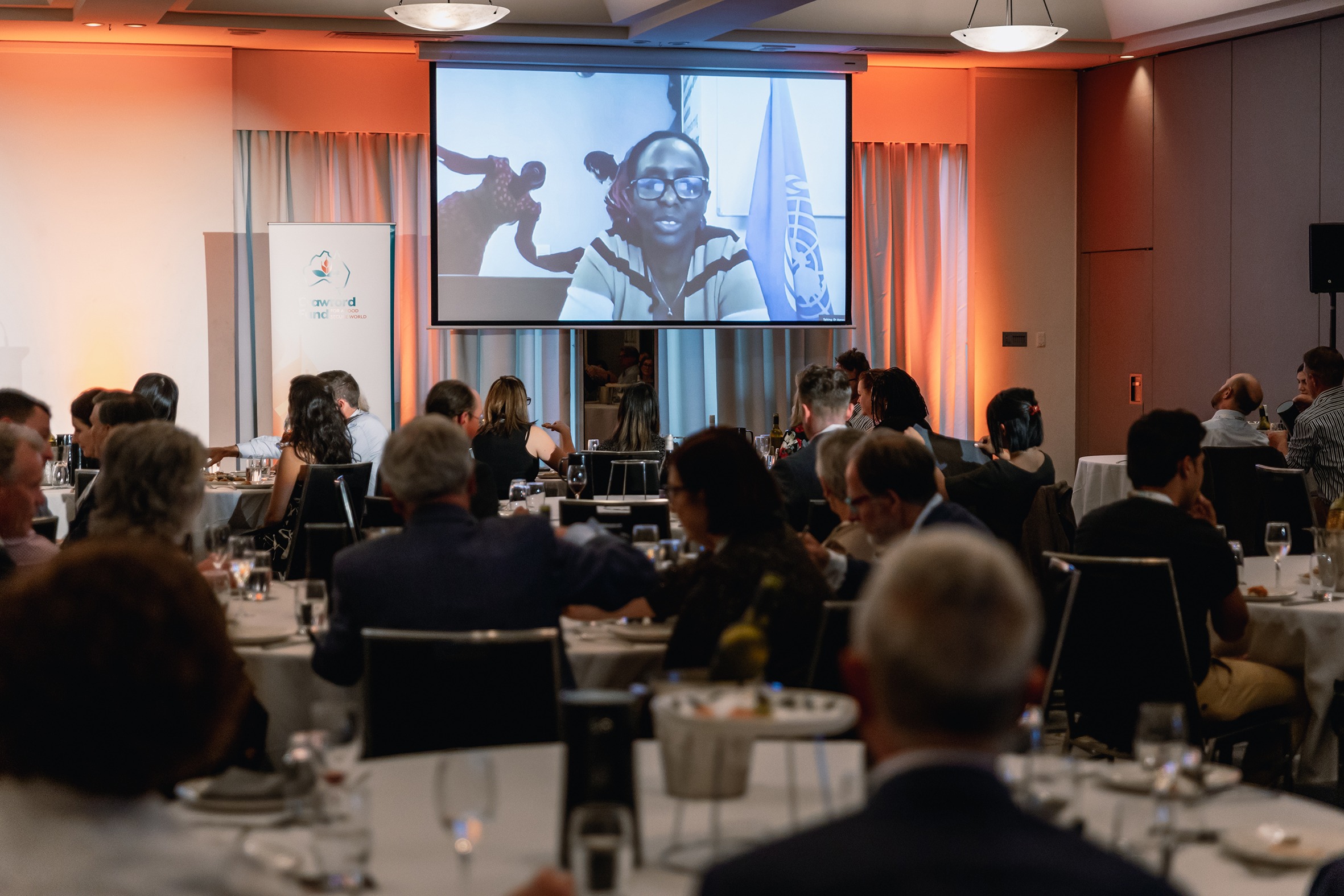
‘The world’s current food systems are failing people, the environment, and our shared future’, Dr Agnes Kalibata highlighted in the Sir John Memorial Address, making clear that a fundamental transformation of our food systems is needed. In opening the 2021 conference, Su McCluskey presented the pathway for transformation, stating that we must work to solve the biosecurity, health, and trade nexus through interdisciplinary and international collaboration. A concept that underpinned the conference, with all speakers united in the message, was that a collective effort can strengthen biosecurity preparedness to prevent invasive species arrival, protect the environment and sustain our food systems.
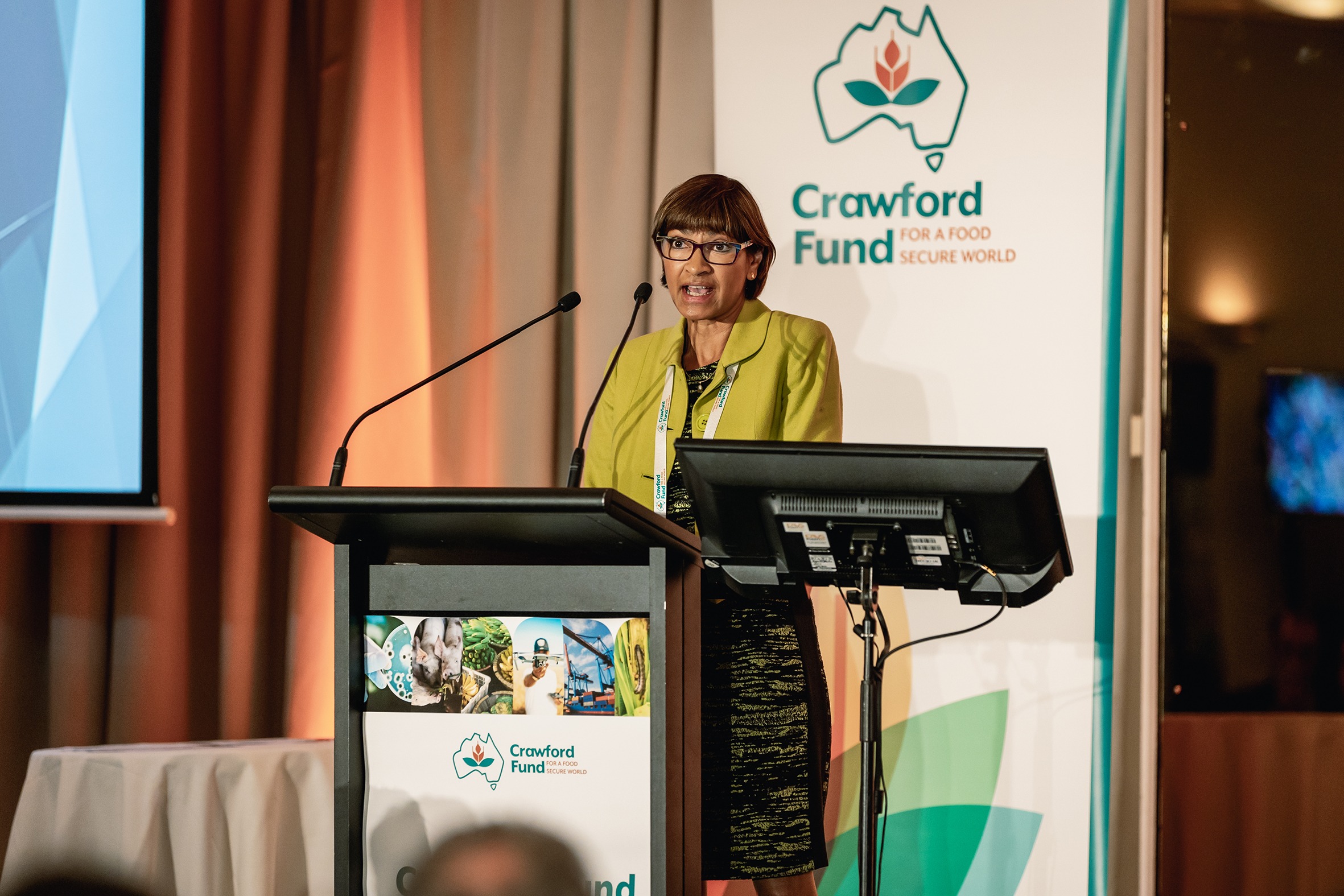
Morning keynote: Threats to global food systems from biosecurity issues
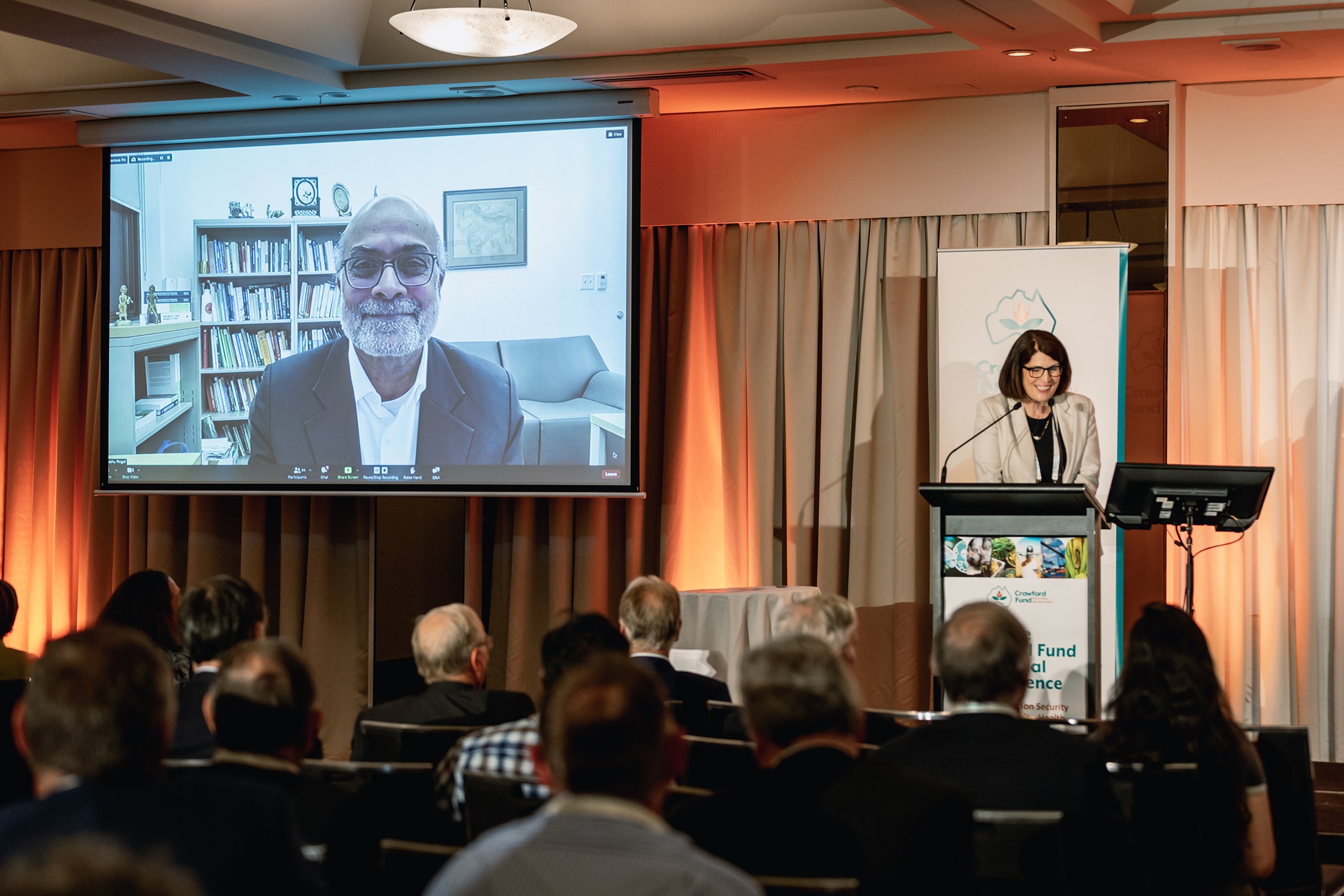
In the morning keynote, Prof Prabhu Pingali said that pests and diseases of plants and animals have occurred throughout history, stressing however that these threats have dramatically increased as our food systems have changed. Walking us through the periods of change, Prof Pingali demonstrated that after the green revolution in the 1960s came a demand for food diversity, shifting diets from cereal-based to an increase in meat and animal product consumption. This led to a rise in global livestock populations and an unprecedented rise in zoonotic diseases. In the 2000s, globalisation opened food markets, which saw a rise in transboundary movement of goods and invasive pests – insects, diseases, and weeds. These periods have led to significant interest today, in food systems as one way to address and solve these problems. But how do we build resilience into food systems and protect them from biosecurity risks? Prof Pingali suggests that it starts with smallholder farms and reducing their biosecurity risks. By doing so, the prospect of biosecurity impacts in other parts of the world is reduced, and resilience is then built into food security. How do we do this? By diversifying farming systems, creating more climate-resilient food systems, and shifting the focus to prevention of incidence rather than control. Pests are moving faster and further, and this is going to be an important factor in the face of climate change. We need to increase value chain and societal investment, increase research and development, and create policy with a One Health approach that integrates food, environment, and human health systems in the solution.
Future proofing with advanced and emerging technologies and tools
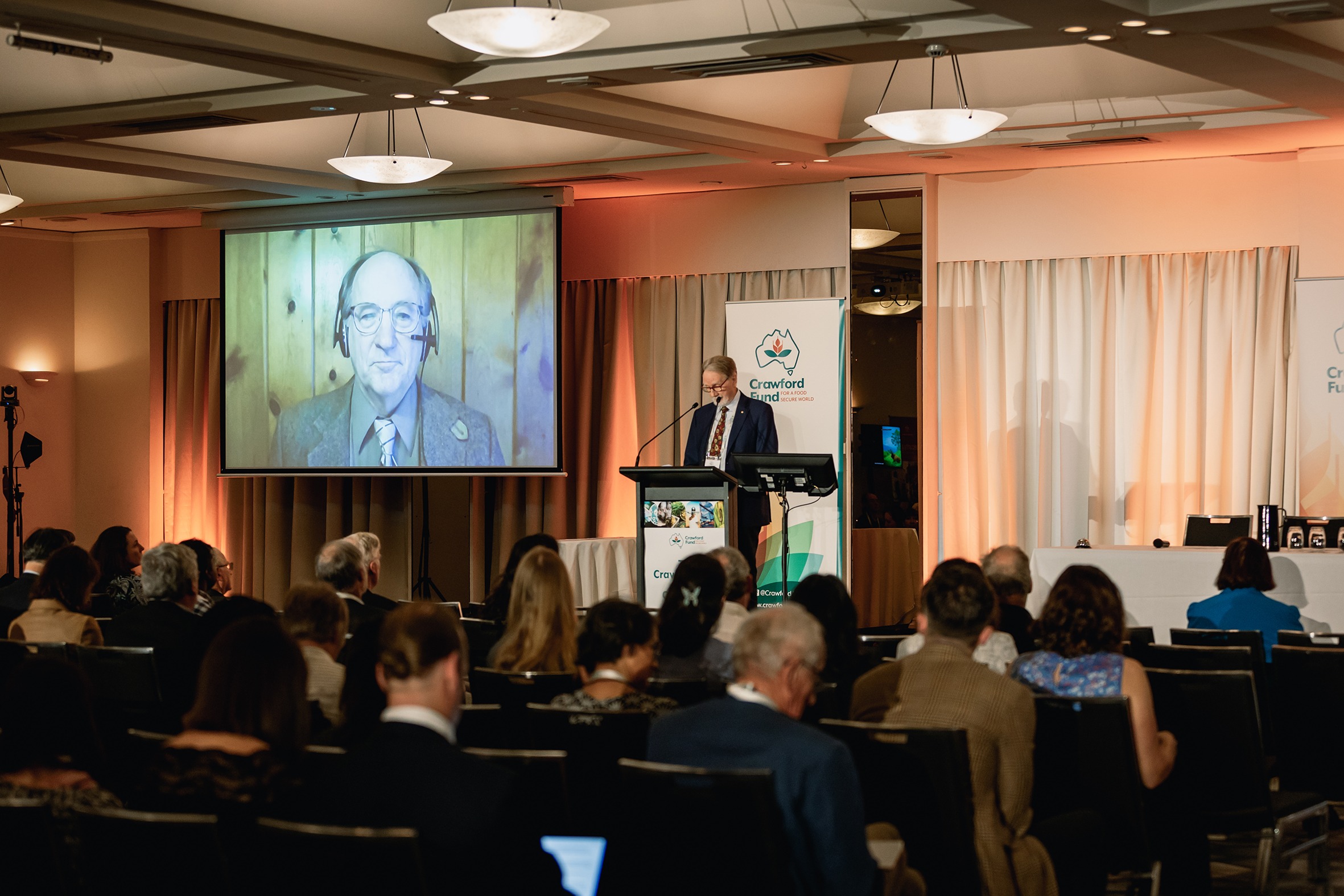
To future-proof our food systems, Dr Rob Horsch examined potential solutions that limit the impact of risks, providing examples of online platforms and tools which illustrate key factors, such as biotic stresses, that influence food production and the risks associated with it. For instance, rain availability; water use linked with photosynthesis, and harvest potential were examples used to demonstrate Australia’s potential to increase wheat production. These are tools that can be applied in other food systems around the globe, emphasising Dr Horsch’s focus on the prevention of biotic stresses, echoing Prof Pingali in a thread that was continued in the case studies. Using the example of Xylella fastidiosa, Prof Pablo Zarco, highlighted that this bacterium can infect over 550 plant species, and is the greatest transboundary threat to plants worldwide. Fast methods for early detection are critical in preventing the establishment and movement of this destructive pest, and Prof Zarco discussed the significant progress made in using hyperspectral and thermal remote sensing as a detection and monitoring tool. In another example of a rapid tool for prevention, Dr Stacey Lynch discussed the use of Loop-mediated isothermal amplification (LAMP), a rapid pathogen detection tool for animal diseases, such as foot-and-mouth (FMD) and African swine fever (ASFV). This field-deployable molecular tool can have a significant impact in resource-poor settings such as Bhutan and Timor-Leste, where it has been tested to collect samples from animals or environmental specimens, delivering results within 20 minutes.
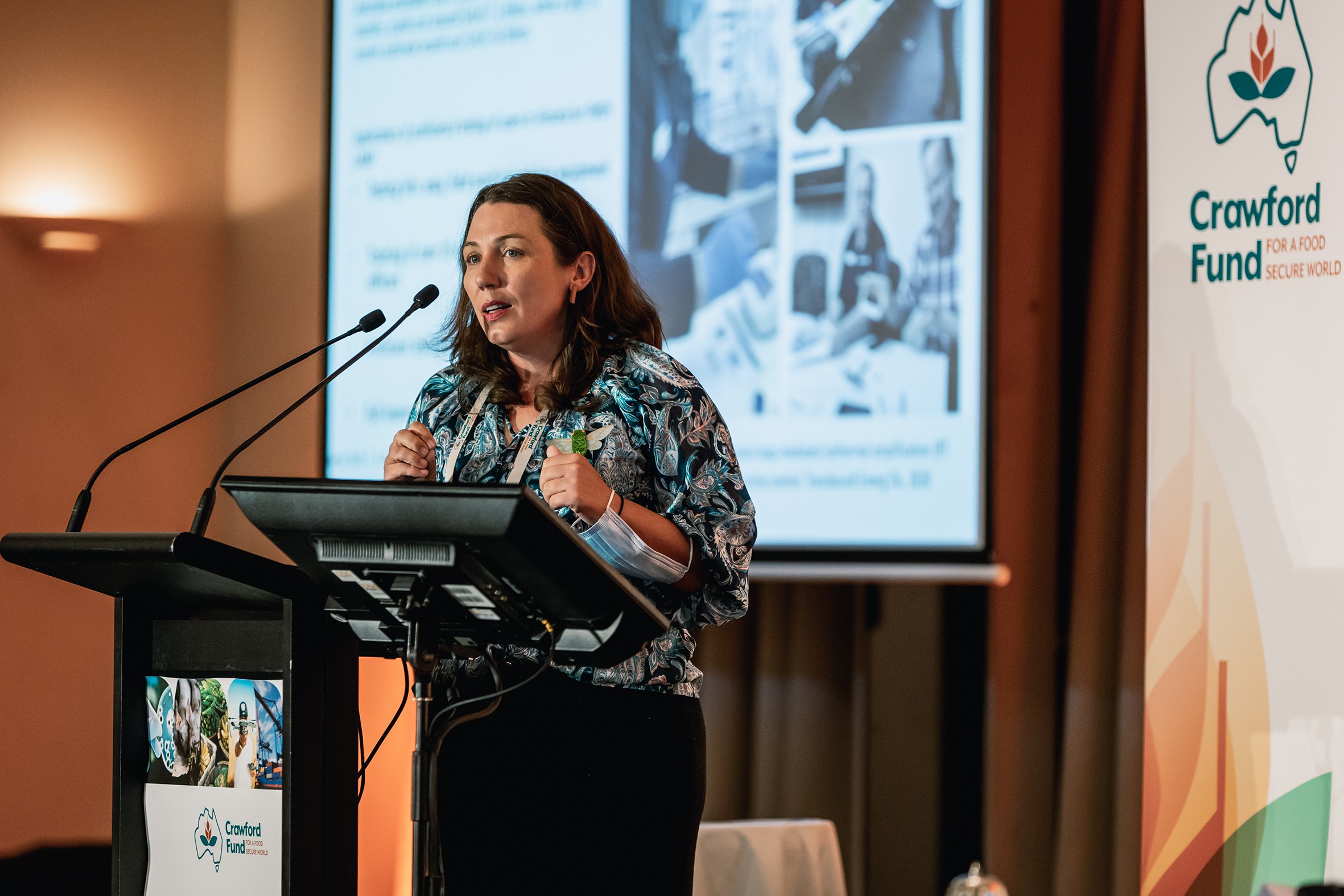
In the third case study, Dr Andrew Barnes provided another example of a robust, fast detection tool in the form of ‘diagnosis in a fish farmer’s backpack’, an inexpensive genomic testing tool for smallholder fish farmers. This tool is simple to operate, does not require a laboratory, with results delivered on a phone app in near real-time. This tool is assisting in reducing the spread of disease, removing the need for antibiotics, therefore, contributing to sustainable fish production. These biosecurity technologies are future-proofing agriculture by aiding farmers in preventing biosecurity impacts on farms.
Afternoon keynote: The private sector perspective
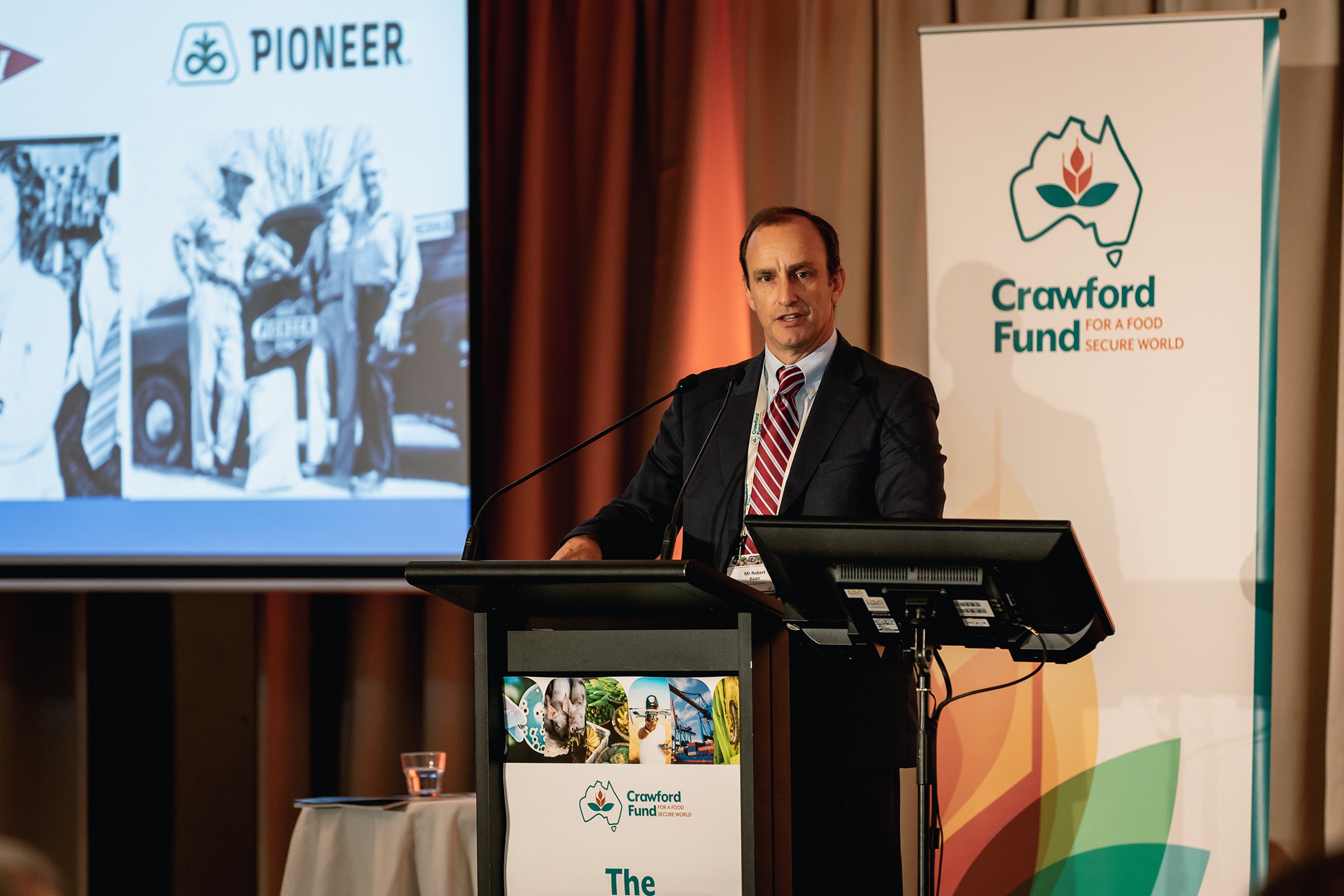
Opening the afternoon keynote, Rob Kaan said that agriculture is not homogenous, stating that each sector faces its distinct challenges in trade, biosecurity, and technology. He called for collective optimism on the issues facing the agricultural sector including proactive collaboration in tackling agriculture’s tough issues. Expanding on the use of digital technologies from the earlier case studies, Mr Kaan discussed how getting farmers to use such tool is one of the main issues facing agriculture today. Particularly as the main effects we see from global threats such as Fall Army Worm (FAW) are seen at the farm level. Therefore, not only do we need rapid responses to these problems, but we need to work on the barriers to the adoption of these technologies by farmers. He believes that shared trust and shared values across the private sector – employees, investors, farmers, and consumers – can drive social change and support the adoption of these new technologies. As he states, agriculture needs to be a trusted industry, grounded in science-based calm and pragmatic decision making, to deliver solutions and to create change. He also believes that engaging with consumers is a great place to begin.
Changing and increasing biosecurity risks to food and nutrition security
‘Biosecurity threats are continually increasing, with supply chains acting as organisational, multilayered routes that are unparalleled vectors for pests’, said Prof Andrew Robinson in his overview presentation. Stating that we cannot continue to use our biosecurity border quarantine in a one size fits all approach, because our connectivity through trade creates biosecurity vulnerability. What we need to recognise is that we are all stakeholders, from the quarantine official to the consumer, and we must each understand our roles in protection and prevention. Using a hockey field as an example of how the biosecurity system should be, Prof Robinson described the midline as the Department of Agriculture, the forwards as the stakeholders, and the goalie as all of us, because the game doesn’t end when a goal gets scored. We are all on the field and we all need to play our role in biosecurity prevention.
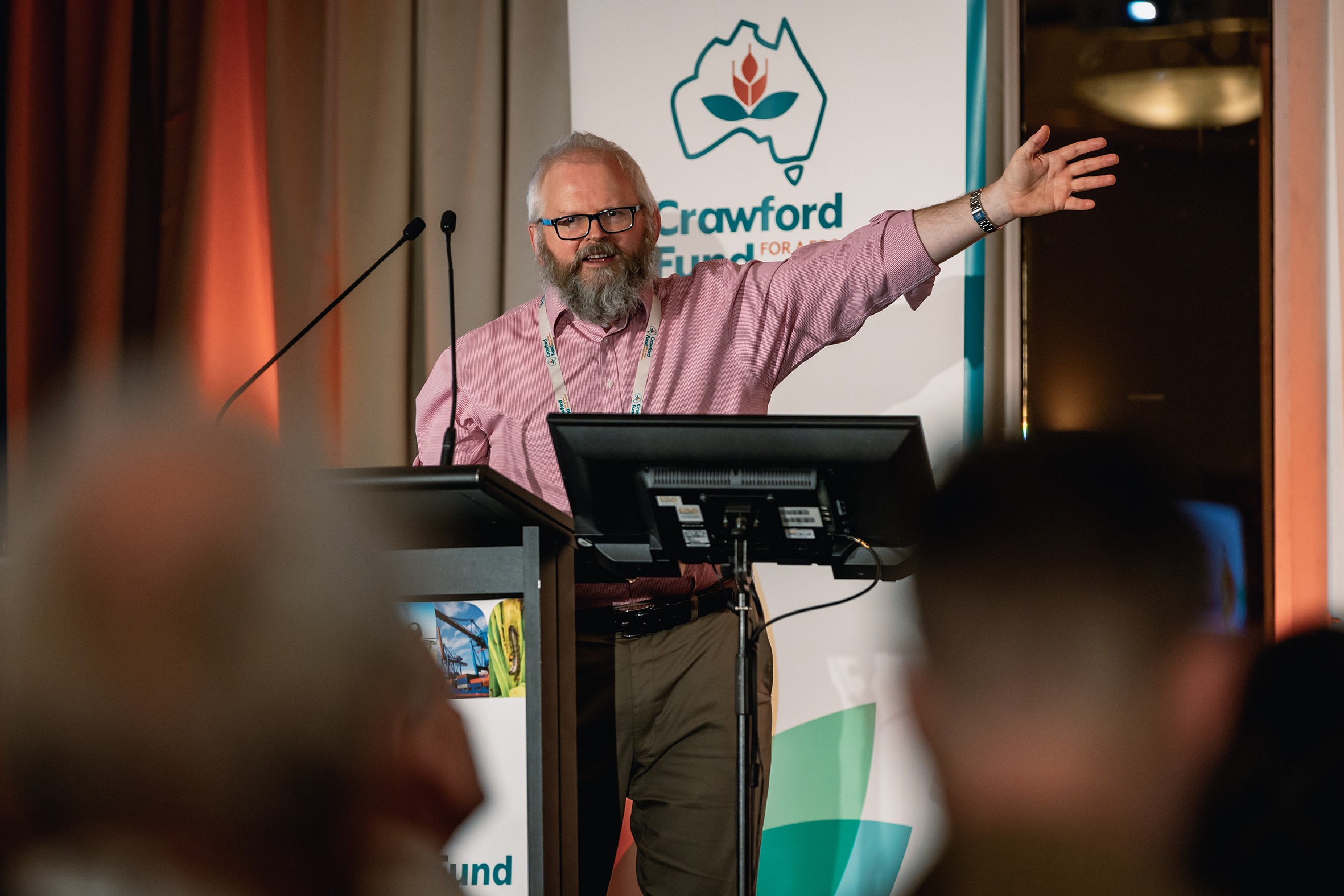
Prof Robinson was followed by three supporting case studies. The first, by Irene Kernot, discussed the impact of Panama TR4, where she asked, ‘will we have a world without bananas?’ The lack of clear practical answers to this question, led her to ask how do we provide farmers with the answers they need to continue farming and do what they do? Well, Ms Kernot states, the response needs to consider the biological, social, economic, and political perspectives to support farmers across the value chain, from the farm to the consumer, to deliver solutions. In his case study, Chris Dale emphasised that biosecurity coordination transcends borders through preparedness, response, and management when discussing FAW in Australia. Providing examples of coordinated national and international arrangements that are in place, including regional coordination with our Pacific and Torres Strait neighbours.
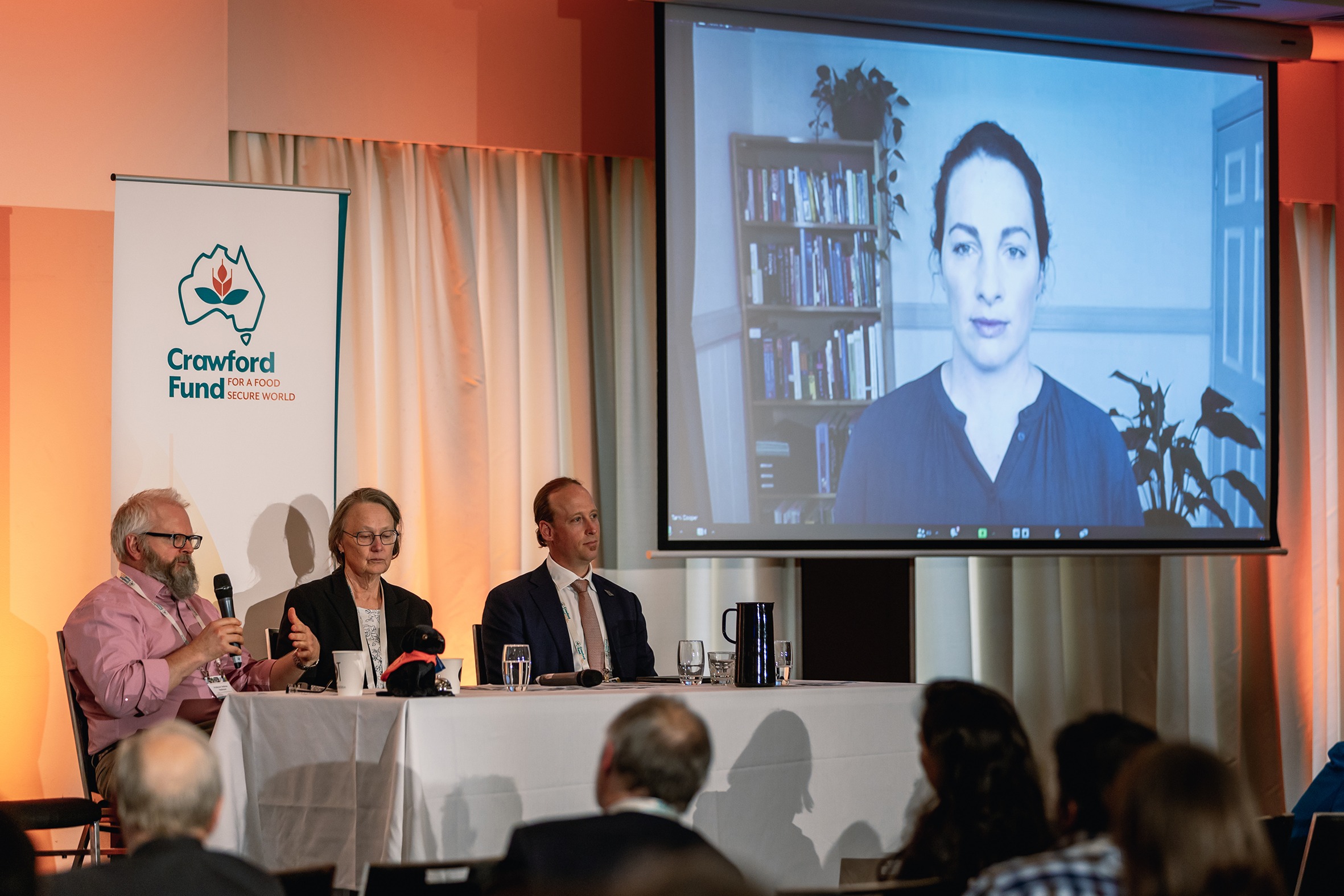
The final case study, by Tarni Cooper, discussed two pilot studies on ASFV, developing a framework to look beyond the ‘numbers of impacts’ of the disease. The first looked at the impact of ASFV in Timor-Leste and the second, in the Philippines, looked at the psych-social impacts of the disease. What the case studies demonstrated is that it is important to have a broader perspective on the social and family impacts of biosecurity threats. Ms Cooper proposed that further research occur to build upon these studies to tailor support, to align with the degree and direction of ASFV impact. The strong theme in this session was the importance of collaboration and the social investment of all stakeholders in the biosecurity process.
Unpacking the nexus in a changing world – the relationship between biosecurity, trade, health, and the environment
Everybody eats, everybody consumes, and, therefore, biosecurity is a collaborative process across sectors and beyond borders to protect our food and environmental systems, said Nicola Hinder in opening the final session. Coming full circle in reference to Prof Pingali’s morning keynote, she reiterated that trade and movement of goods increase biosecurity threats and risk. But alongside on-ground technologies and tools for prevention, as discussed throughout the conference, there is also a set of international standard-setting instruments that underpin trade and biosecurity. Referring to the ‘three sisters’ – World Organisation for Animal Health (OIE), Codex (international food standards-setting body), and the International Plant Protection Convention (IPPC), Ms Hinder says each are respectively responsible for the standards, guidelines, and recommendations in animal and plant health that promotes safe trade built on science-based evidence. These are transparent standards that are another tool used to protect global food safety and food security.
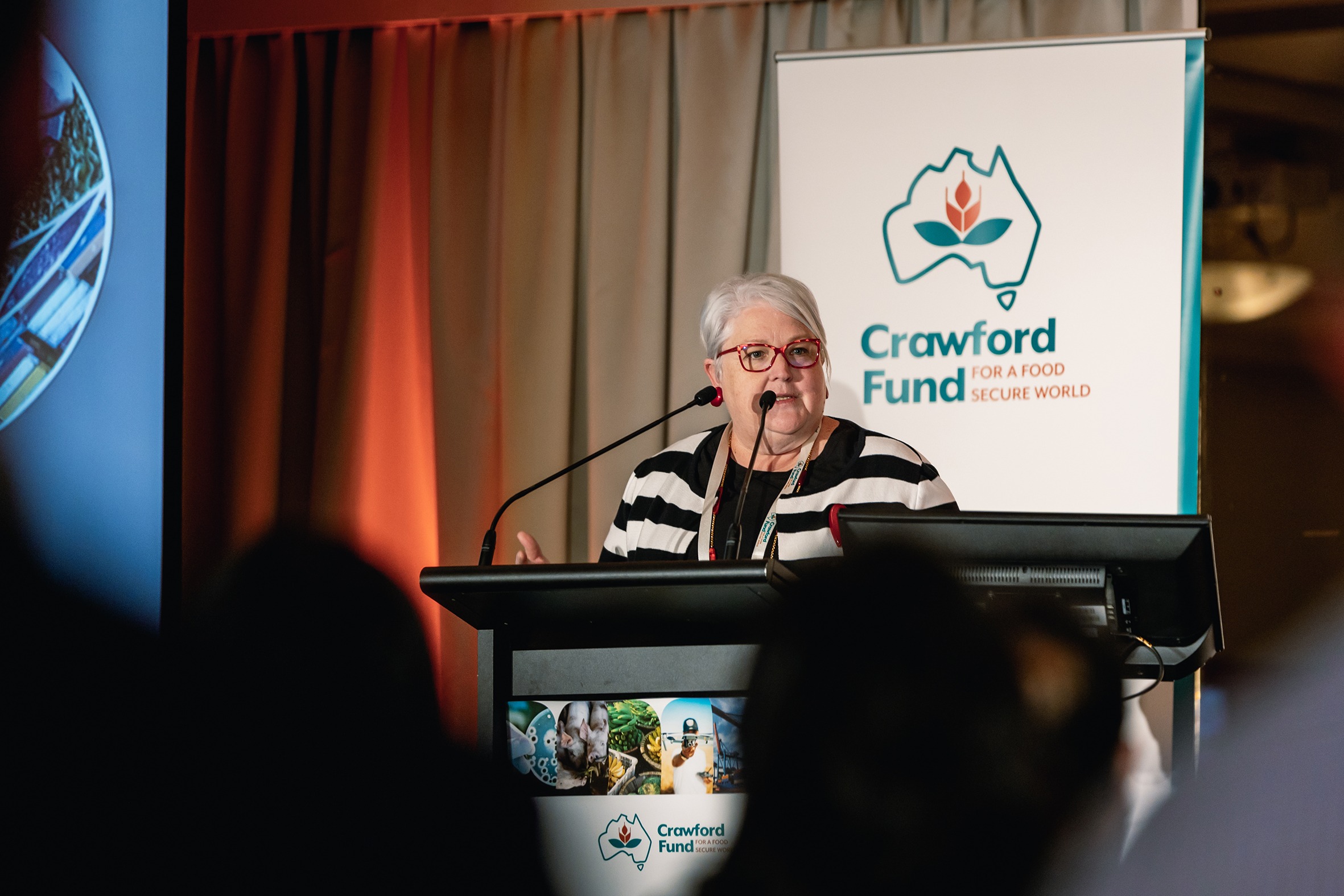
In the first case study of the final session, David Gale shared an example of global biosecurity collaboration when discussing the International Plant Sentinel Network. This is a global network coordinating and linking specialists in plant pests to monitor and contribute to an early warning system for new and emerging threats. In another case of a linked approach, Dr Jay Anderson discussed the development of diagnostic capacity and scientific reporting on leaf-spot diseases in bananas in Laos. Every aspect of banana growing in Laos is considered essential, not just economically, but as a food source and for their cultural importance in ceremony. At the local level, the resources were lacking for diagnostic processing, so local officers connected with international laboratories to process the results. The outcome was two-fold, verifiable records of pathogens in Laos were provided, and capacity development in diagnostics was developed amongst both Australian and Lao scientists. In the final case study, Dr Walter Okelo asks how do we bring multiple sectors together to tackle antimicrobial resistance (AMR)? His answer, through systems thinking, is a One Health approach, because human and environmental systems are only as strong as their weakest link. Sharing lessons learned, Dr Okelo says increased research capacity and increased knowledge of AMR can improve the use and regulation of antimicrobials and it can be achieved through strong partnerships that capture the interest of all sectors.
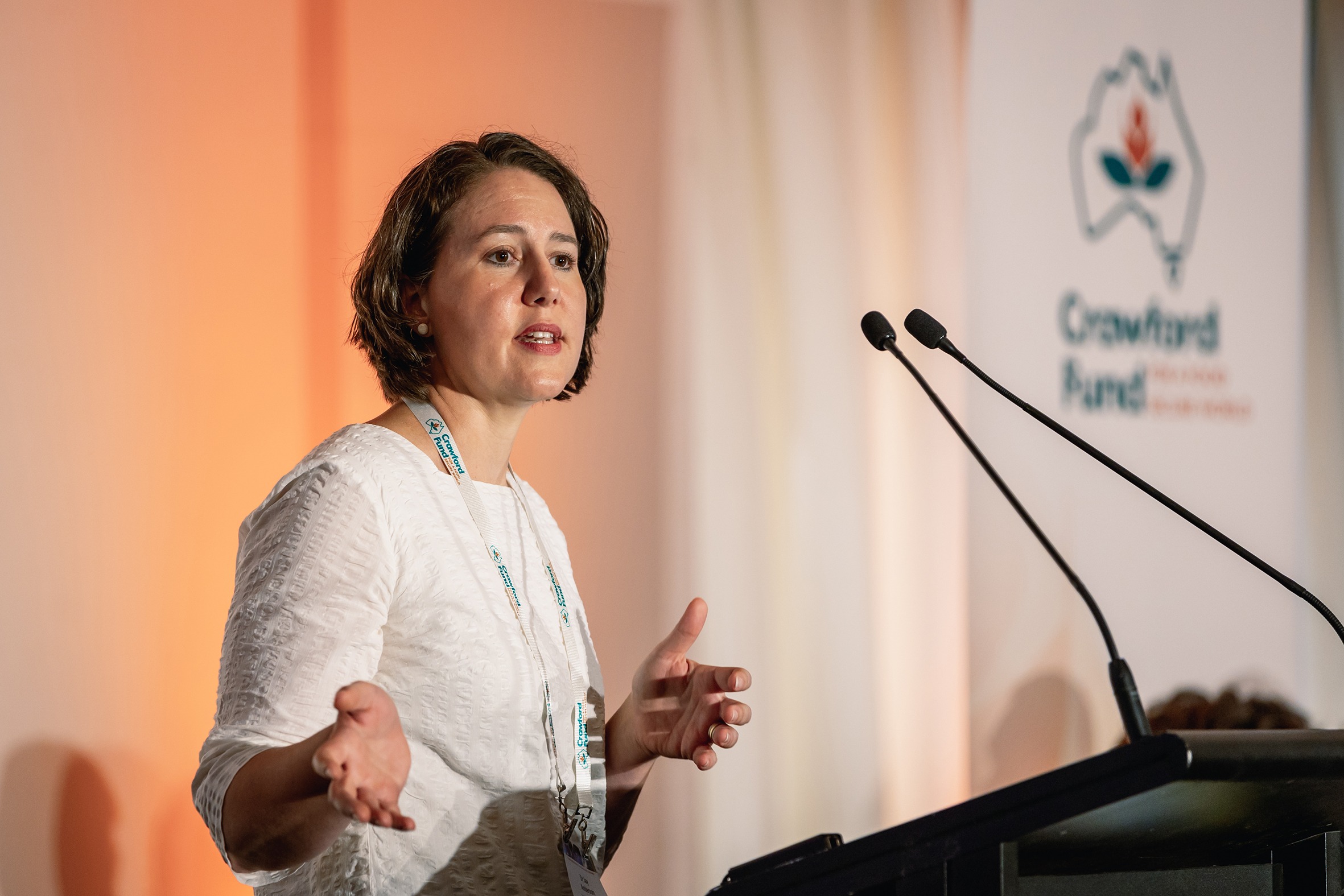
Final thoughts
In synthesising the conference, Dr Helen Scott-Orr captured the reoccurring themes of the day, that biosecurity involves all of us, that we need to focus on prevention and preparedness, and that trust, collaboration, and networks are crucial to doing so. In closing the 2021 Crawford Fund Conference, Dr Colin Chartres echoed these sentiments, remarking that as scientists, we all need to be involved, because the impact agriculture has, is on all of us, and on the environment, and must become everyone’s responsibility.




 0
0